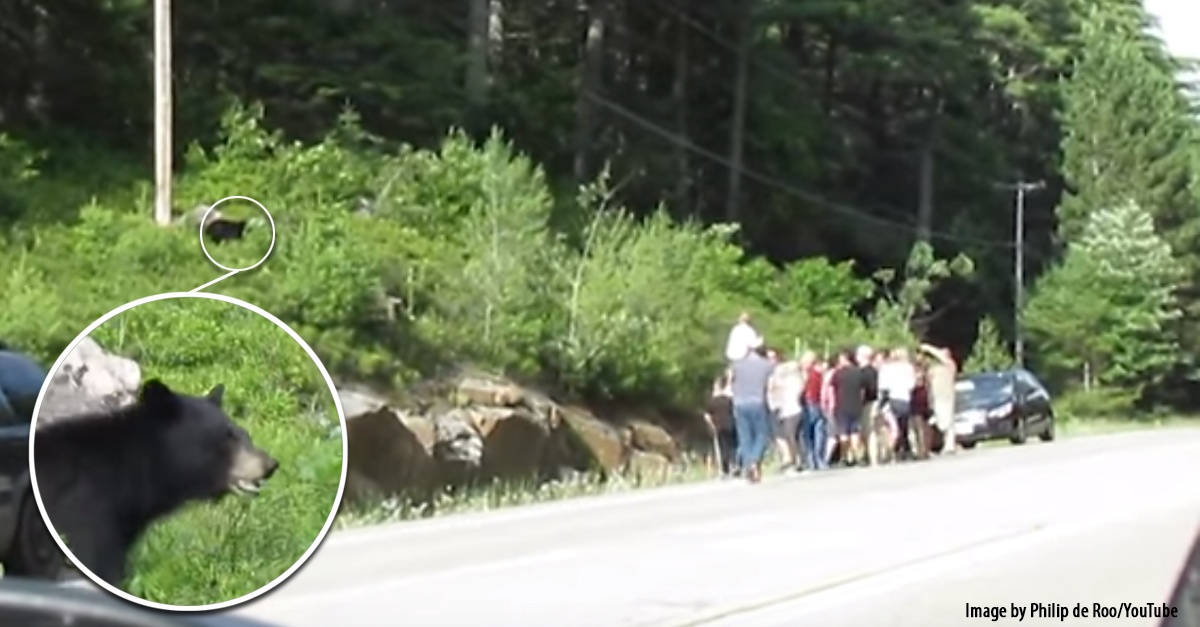
“Don’t run toward the bear” falls into the “duh” category of wildlife co-existence and outdoor safety. Yet, across Canada, people are actually running toward the bears.
A video posted by Philip de Roo on YouTube, and subsequently picked up by Global TV, showed more than a dozen people standing on the side of a road in Algonquin Provincial Park, pointing at and photographing a black bear. The bear was approximately 15 feet away from the group, which included parents pushing small children forward for a better view.
de Roo’s recorded comment to his family of “don’t run toward the bear” was elaborated in an interview with Global TV.
“I was shocked,” he said. “My mind was blown. I wondered why anyone would want to do that and be that close to an animal out in the open like that, it’s so dangerous.”
Jolanta Kowalski, a spokesperson for the Ontario Ministry of Natural Resources and Forestry told Global through a statement that “when humans get close to wildlife the animal starts to lose its fear of people; which puts both people and the animal in danger. Taking a selfie photo isn’t worth the risk.”
But this isn’t isolated to Ontario – the issue of highway bear feeding and photography has seemingly been rising this summer, as media reports continue to pile up (BLOG: Is your photo worth their life?). And it isn’t even just bears and highways that are of concern – remember the sea lion that pulled a little girl into the water when she sat down for a photo?
It’s a similar enough circumstance to see a pattern – people getting too close to wildlife across the country for self-serving reasons. It’s potentially a positive sign: people want to see wildlife, understand them, enjoy them. And we all know, as Jacques Cousteau said, “people protect what they love.”
The problem, of course, is that they aren’t taking the individual animals’ wants and needs seriously. Most wild animals are just that: wild. They don’t want to be around people, and would like to go on living their lives. But when we offer food, or get close up without causing any harm (or hazing) to the individuals, they learn that being close to people isn’t too bad. But we don’t know their threshold: will the bear in this photo meander away, content that he had a snack and no one touched him? Or will he get pushed just a little too far, and issue a warning – a warning that could seriously injure a human?
Ultimately, the victim remains the same: the animal. They will eventually come too close for comfort to someone, get into a conflict scenario, or possibly even injure someone, and the cost will be their life. We believe that education and enforcement are the keys to preventing this, and ending this apparent trend in our parks – but it’s up to all Canadians to pressure local municipalities, parks boards, provinces, and the federal government to provide resources and treat this the way we see it: as a crisis.
monthly donor(for as little as $10/month – the cost of two lattes) pleaseclick hereand help us save lives today.

